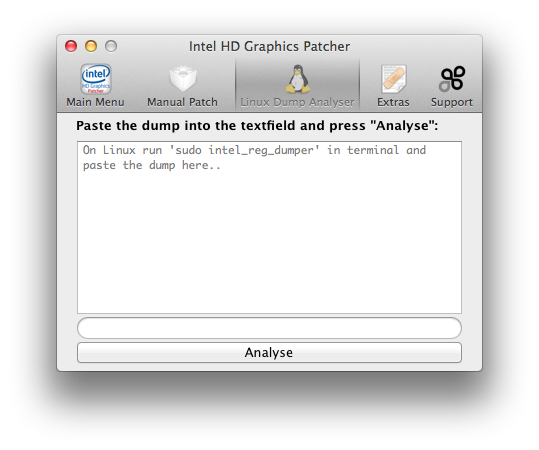May 23, 2017 Just Radeon or both Radeon/Intel switched. Specs on webpages are notoriously incorrect. It is difficult for the manufacturer itself to get it correct sometimes, let alone retail partners. Kashful asrar by khomeini pdf to word.
The 'boot to black screen' issue as well as the broken sleep/wake have been fixed! Read below for details. Introduction Most of you might have noticed that the Buyer's Guide doesn't list a single compatible AMD Radeon card at the moment. This would make many people assume that they weren't compatible with OS X at all, but in fact Apple has included driver support for almost every relevant AMD graphics chipset from the last years, so there's a good chance your standard PC card will work out of the box!

Lego chess download pc game. However, before getting too excited there are a few things to consider to achieve hassle-free long-term compatibility, so I've composed this guide to collect all necessary information and to clarify some urban myths. I'll explain how to find perfectly compatible cards and how to improve the overall experience on not so compatible GPUs. This won't be a super-detailed step-by-step tutorial on every single aspect, but instead an overview on most important topics with links to further information. Note: I don't want any Nvidia vs.
AMD discussions here: Both have their right to exist, and after reading the GPU recommendation section you'll know the pros and cons of Radeons so you can choose yourself. General Information To choose a compatible graphics card it is helpful to know some details about the operation principles of the AMD drivers. Obviously I have never seen the source code of those drivers so my knowledge isn't as deep as it could be, but for the scope of this guide it'll be fine. AMD Kernel Extensions The AMD drivers consist of a lot of kernel extensions, two of which are particularly interesting for the (possible) OS X compatibility of a specific GPU: AMD[5,6,7,8,9]000Controller.kext (one for each AMD Radeon GPU family) and AMDRadeonX[3,4]000.kext. The first is responsible of setting up basic 2D operation, correct resolutions, handling the connection ports of your card (rooting the signals to the correct ports, detecting hot plug actions, handling multiple screens) and others while the latter is mainly responsible for the 3D acceleration of your card. Both types of kexts contain a list of PCI device IDs in their Info.plist to detect and properly initialize connected GPUs. Having the device ID of a specific card in both files is necessary but not sufficient to make it work!
Apple will add some device IDs every now and then, and while some of the added cards will actually work, others might have awfully buggy drivers because Apple added the IDs just for testing purpose. Do not buy a card assuming it's fully compatible just because you see the device ID in there!! There are some cards which are very similar to supported cards but still don't have their device ID in the drivers. They can usually be enabled by either modifying the Info.plist of both kernel extensions (not recommended, because changes will be lost on the next OS X update and you'll violate the kext signing). Initialization Process If the PCIe device ID of the installed card has a match in Info.plist files, it can be initialized.
Recent Pages
- Lo Strano Mondo Dei Materiali Metallici Download Adobe
- Algis Hat Obrazec
- Drum Midi Files Metallica
- Download Game Perang Tank Gratis Untuk Pcc
- Download Gta San Andreas Armenian Mod
- Need For Speed Underground 2 Shirokoekrannoe Razreshenie 1366x768
- Netcam Watcher Pro 3 3 Serial Key
- Upgrade Firmware Alcatel Ot 991
- Profili Artikulyacii Zvukov V Kartinkah
- Mtv Video Music Awards 2012 Full Show Download